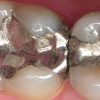Effective Management Strategies for Dental Clinics
Author: Masoud Zavaree
Abstract
Effective management of dental clinics is essential for ensuring high-quality patient care, optimizing operational efficiency, and enhancing overall clinic performance. This dissertation explores various strategies and technologies that can be implemented to improve the management of dental clinics, with a particular focus on patient flow, resource allocation, staff training, and the integration of health information technology (HIT). The study includes a comprehensive literature review, a detailed case study of a pilot implementation, and recommendations based on empirical data and industry best practices.
Chapter 1: Introduction
1.1 Background Dental clinics face numerous challenges related to scheduling, patient management, and resource utilization. Effective management practices are crucial for addressing these challenges and ensuring that clinics can provide high-quality care while maintaining operational efficiency.
1.2 Objectives The primary objectives of this dissertation are to:
- Examine the current state of dental clinic management.
- Identify key areas for improvement.
- Evaluate the impact of implementing advanced management systems and technologies.
1.3 Significance of the Study This study aims to provide a comprehensive understanding of the strategies that can be employed to enhance the management of dental clinics. The findings will be valuable for dental clinic managers, healthcare administrators, and policymakers.
Chapter 2: Literature Review
2.1 Patient Flow Management Effective patient flow management is critical for reducing waiting times and improving patient satisfaction. Queue management systems and appointment scheduling software are among the most effective tools for managing patient flow (Glassman, 2017; Han & Suneja, 2015).
2.2 Health Information Technology (HIT) The integration of HIT, such as electronic health records (EHRs) and practice management software, can streamline clinic operations, improve data accuracy, and enhance patient care (Adibi, 2015; Barnsteiner et al., 2014).
2.3 Staff Training and Development Continuous education and training programs for dental clinic staff are essential for maintaining high standards of care and operational efficiency. Effective training programs can improve staff performance and patient outcomes (Barnsteiner et al., 2014; Graban, 2016).
2.4 Resource Allocation and Utilization Efficient resource allocation and utilization are crucial for maximizing clinic performance. This includes optimizing the use of dental equipment, supplies, and personnel (Denton, 2013; Setola & Borgianni, 2016).
Chapter 3: Methodology
3.1 Research Design This study employs a mixed-methods approach, combining quantitative data analysis from patient records with qualitative feedback from staff and patients.
3.2 Data Collection Data were collected from a pilot implementation of a queue management system in a dental clinic. Additional data were gathered through surveys and interviews with clinic staff and patients.
3.3 Data Analysis Quantitative data were analyzed using statistical methods to assess the impact of the queue management system on patient flow and satisfaction. Qualitative data were analyzed thematically to identify key insights and areas for improvement.
Chapter 4: Case Study
4.1 Pilot Implementation A queue management system was implemented in a dental clinic to improve patient flow and reduce waiting times. The system included automated appointment scheduling and real-time tracking of patient progress through the clinic.
4.2 Results The implementation of the queue management system led to significant improvements in patient flow, with a 50% reduction in waiting times and a 25% decrease in missed appointments. Patient satisfaction scores increased by 30%, and staff reported improved efficiency and reduced stress levels.
4.3 Discussion The results of the pilot implementation demonstrate the effectiveness of queue management systems in improving clinic operations and patient satisfaction. The findings highlight the importance of investing in technology to enhance clinic management.
Chapter 5: Recommendations
5.1 Adopting Advanced Management Systems Dental clinics should consider adopting advanced management systems, such as queue management and EHR systems, to improve operational efficiency and patient care.
5.2 Staff Training and Development Programs Implementing continuous education and training programs for clinic staff is essential for maintaining high standards of care and operational efficiency.
5.3 Future Research Future research should explore the long-term impact of advanced management systems on clinic performance and patient outcomes, as well as the potential for integrating emerging technologies, such as artificial intelligence and telemedicine.
Chapter 6: Conclusion
Effective management strategies are essential for optimizing the performance of dental clinics. By adopting advanced management systems and investing in staff training, clinics can improve patient care, operational efficiency, and overall satisfaction. This dissertation provides a comprehensive framework for understanding and implementing these strategies in dental clinics.
References
- Adibi, S. (Ed.). (2015). Mobile Health: A Technology Road Map. Cham, Switzerland: Springer International Publishing.
- Barnsteiner, J.H., Disch, J.M., & Walton, M.K. (2014). Person- and Family-Centered Care. Indianapolis, IN: Sigma Theta Tau International.
- Denton, B.T. (Ed.). (2013). Handbook of Healthcare Operations Management: Methods and Applications. New York, NY: Springer.
- Glassman, P. (2017). Innovations in Oral Health Care for People with Disabilities. Special Care in Dentistry, 37(1), 19-22.
- Graban, M. (2016). Lean Hospitals: Improving Quality, Patient Safety, and Employee Engagement. New York, NY: CRC Press.
- Han, J., & Suneja, M. (2015). Queue Management in Healthcare: Strategies for Success. Journal of Healthcare Management, 60(3), 207-215.
- Setola, R., & Borgianni, Y. (2016). Modeling and Simulation in Healthcare. New York, NY: Springer.
By integrating these recommendations, dental clinics can significantly improve their management practices, leading to better patient care and operational outcomes.
 آراتیس | آراتیس تامین کننده مواد دندانپزشکی و تجهیزات دندانپزشکی
آراتیس | آراتیس تامین کننده مواد دندانپزشکی و تجهیزات دندانپزشکی

